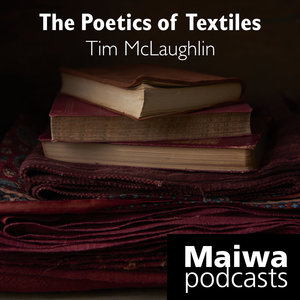Assam: Land of the Golden Silk - Part 2

In India it comes from Antheraea mylitta. We've gone with the spelling "Tussar" but you'll also find Tussah, Tusseh, Tasar, Tussore, Tusser etc. Dr. John Feltwell in his book The Story of Silk (1990) tells us that "Tusseh is the Hindustani for shuttle" and suggests that trade in Tussar silk may predate that of Bombyx. Tussar is also found in China, Antheraea peryyni , and Japan Antheraea yamamai . It is sometimes known as oak silk or oak tussar after its favourite food.
 The moths are, quite simply, beautiful. They have a 15 cm wingspan and the eye-spots are clear (which is very unusual and hard to show in a photo). These pictures were the first we took in Assam. We enquired into the life cycle of the insect as we keep finding statements about the unsuitability of Tussah for domestication in books and we wanted to know first hand why this was so. For example, in our library we have a thin volume titled simply Silk from Macclesfield, Cheshire, written by Peter Gaddum in 1947. It states:
The moths are, quite simply, beautiful. They have a 15 cm wingspan and the eye-spots are clear (which is very unusual and hard to show in a photo). These pictures were the first we took in Assam. We enquired into the life cycle of the insect as we keep finding statements about the unsuitability of Tussah for domestication in books and we wanted to know first hand why this was so. For example, in our library we have a thin volume titled simply Silk from Macclesfield, Cheshire, written by Peter Gaddum in 1947. It states:


(Our 2008 visit to Assam in search of three types of silk)

In India it comes from Antheraea mylitta. We've gone with the spelling "Tussar" but you'll also find Tussah, Tusseh, Tasar, Tussore, Tusser etc. Dr. John Feltwell in his book The Story of Silk (1990) tells us that "Tusseh is the Hindustani for shuttle" and suggests that trade in Tussar silk may predate that of Bombyx. Tussar is also found in China, Antheraea peryyni , and Japan Antheraea yamamai . It is sometimes known as oak silk or oak tussar after its favourite food.
 The moths are, quite simply, beautiful. They have a 15 cm wingspan and the eye-spots are clear (which is very unusual and hard to show in a photo). These pictures were the first we took in Assam. We enquired into the life cycle of the insect as we keep finding statements about the unsuitability of Tussah for domestication in books and we wanted to know first hand why this was so. For example, in our library we have a thin volume titled simply Silk from Macclesfield, Cheshire, written by Peter Gaddum in 1947. It states:
The moths are, quite simply, beautiful. They have a 15 cm wingspan and the eye-spots are clear (which is very unusual and hard to show in a photo). These pictures were the first we took in Assam. We enquired into the life cycle of the insect as we keep finding statements about the unsuitability of Tussah for domestication in books and we wanted to know first hand why this was so. For example, in our library we have a thin volume titled simply Silk from Macclesfield, Cheshire, written by Peter Gaddum in 1947. It states:"In the early part of the season cocoons are collected from the jungle and eggs from the moths that emerge are gummed on long strips of paper, which are then hung on suitable trees, where they hatch quite naturally. A barrier of some sort is coiled around the trunks to prevent the caterpillars from wandering and here they collect when a tree has been stripped of foliage, to be removed to another by the peasants. During the larval stage, which occupies up to seven weeks, guard is kept against the insect's natural enemies such as bats, birds and beetles, and on completion the cocoons are harvested like fruit."
And indeed, this is exactly what we had found when we visited Orissa in 1999.


The cocoons are not like those of other silk moths, they are almost like eggshells and they have a very distinct stem where the cocoon is attached to the branch. The cocoons would be the size of a very small chicken egg, maybe the size of a quail egg. Each one is a slightly different colour depending on what the insect ate. Some are light green, others are yellow, some are grey and others almost white. The dyers among us will appreciate that the shades of the cocoons (the silk) are the result of tannins in the leaves ingested by the larvae.




When we looked into the cultivation of Tussah in Assam we found something a little different from what we found in Orissa ...











 Part 2 -Presentation, Question & Answer
Part 2 -Presentation, Question & Answer







